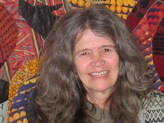
Judi Jennings
Does size matter? Of course it does. But is this the right question to ask first?
How about approaching the question of size by first asking how arts, culture, and philanthropy advance positive social change? And how does size relate to equity?
Size matters locally and globally, but arts and culture drive change regardless of the size. Maria Rosario Jackson’s recent report on Developing Artist-Driven Spaces in Marginalized Communities convincingly argues that arts and culture create community identity, stimulate civic engagement, and affect neighborhood economies directly and indirectly.
Writer and cultural organizer Jeff Chang argues that “where culture leads, politics will follow” on national and international issues.
As a place-based grantmaker, my theory of change is that local people make the most appropriate and lasting advancements when they have the necessary tools and resources.
Allied Media Projects (AMP) in Detroit is a great example of place-based social change. AMP argues that “place is important” and “Detroit is a source of innovative, collaborative, low-resource solutions."
Honoring local culture does not mean working in isolation. MicroFest USA, for example, led by the Network of Ensemble Theatres, is looking at how art and culture can create healthy communities in Detroit, Appalachia, New Orleans, and Hawaii. The idea is that performance-based learning exchanges like this can connect artists, activists, cultural workers, and thinkers working locally and nationally.
Read More








 Judi Jennings
Judi Jennings




